
How to Optimize Your Website for More Post-Click Conversions
Attention-grabbing ads drive traffic, but the real conversions happen post-click—when users navigate your site, read emails, or complete checkout.
To turn ad clicks into repeat business, it’s essential to remove digital hurdles and streamline buyers’ journeys.
In this guide, you’ll learn how to optimize post-click conversions, increase customer loyalty, and grow your business.
Table of contents
What are post-click conversions?
Post-click conversions are the desired actions users take after clicking on an ad campaign or call-to-action (CTA), such as:
- Purchasing
- Completing forms
- Submitting applications
Unlike the pre-click phase, where ads drive interest, the post-click stage is where the real customer experience begins. It’s about seamlessly guiding visitors from curiosity to conversion.
Imagine a customer clicks on your display ad for a new pair of shoes.

Source: Google
The post-click experience includes browsing product details, choosing a size, and navigating through a checkout process.

Source: Thursday Boot Company
If any of these steps are difficult, you risk losing the sale. But if you’ve carefully optimized the journey, you’ll achieve more post-click conversions.
Post-click conversions vs. post-view conversions
Post-click conversions happen when a user clicks an advertisement and then completes a desired action.
Post-view conversions occur when a user sees an ad, doesn’t click on it, and later converts through another channel. The ad placement may have influenced the visit, but you won’t know unless you ask each customer.
Both types of conversions are valuable. However, post-click conversions are easier to track and optimize as they link directly to specific sources (e.g., display advertising, search results, or CTAs).
And, in the end, the efforts to improve conversions that come directly from ad traffic often influence all conversions, regardless of the source of the traffic.
You can track this attribution in Google Analytics (GA4) to know what works and doesn’t.
Why optimizing post-click conversions matters
Optimizing post-click experiences makes shopping easy for your customers.
That’s how it results in faster, more meaningful revenue and customer satisfaction gains than focusing solely on traffic.
Have you ever had a frustrating in-store experience with long waits, confusing layouts, or unhelpful staff? You probably just wanted to get away.
The same happens online when users arrive at a slow, cluttered landing page, try to navigate a confusing site, or struggle with complex forms.
Online shoppers just want instant answers, seamless shopping experiences, and up-to-date availability information.
Take eBay’s text-heavy website from the early 2000s.
Limited choice meant the design did the job back then, but you’d never buy from it now. It’s a nightmare to navigate, with close to 50 tightly packed menu options on the left side alone.
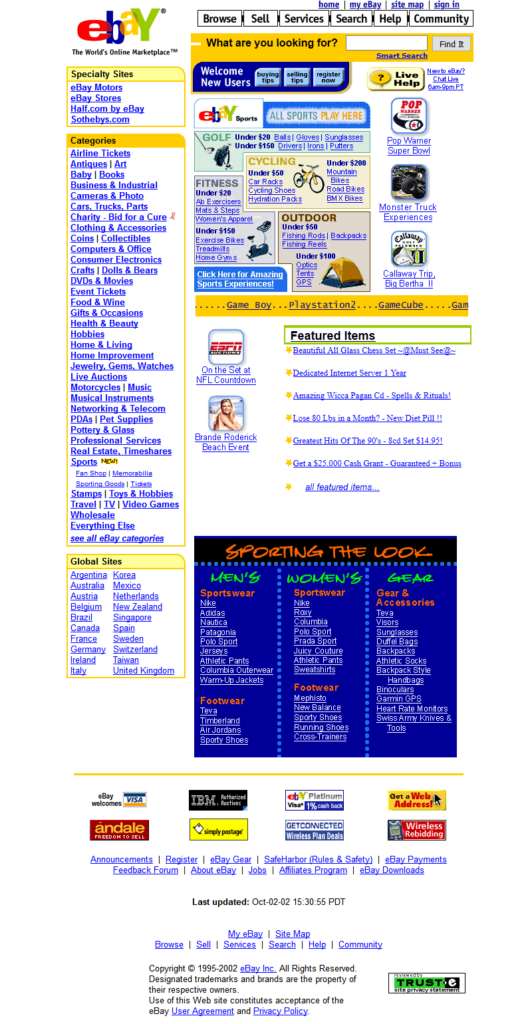
Source: Web Design Museum
Customers who encounter a fraction of this friction will likely abandon their experience and head to your competitors.
Even those who persevere will form a negative opinion of your brand, meaning they might not return or recommend it to others.
You must replace those lost sales opportunities with other leads, which increases your cost-per-acquisition (CPA) and decreases profitability. Then, the cycle continues.
In contrast, a seamless post-click experience boosts both conversions and customer loyalty.
When users can find what they need and finish their transactions with little effort, they associate your brand with convenience and reliability.
Check out eBay’s homepage in 2024:
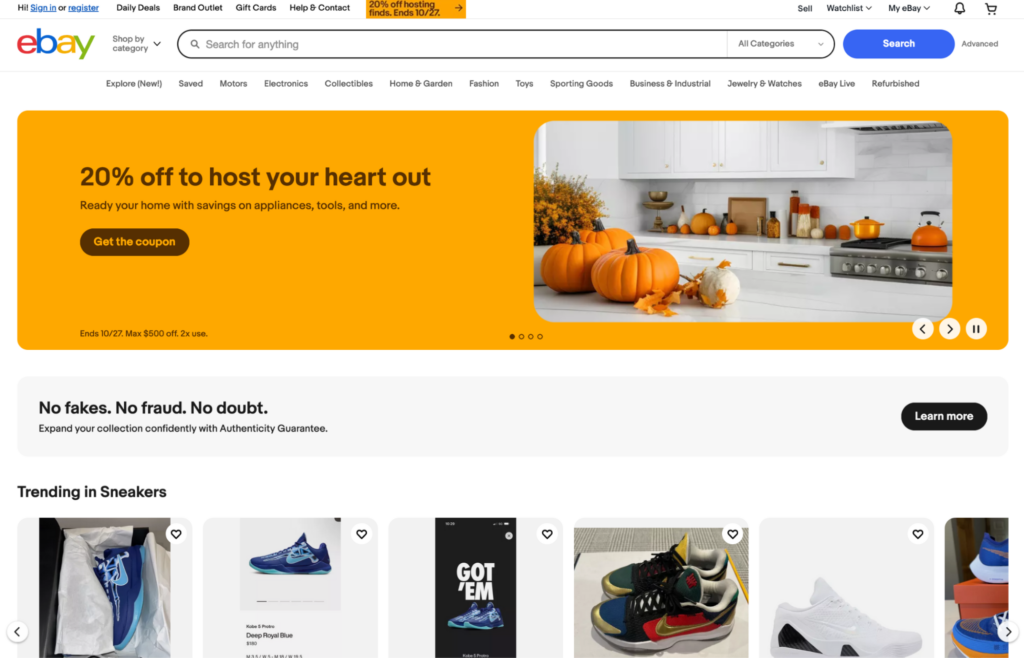
Source: eBay
It’s convenient to browse.
It’s clear. There’s plenty of visual space for users to quickly digest their options, and relevant promotions are front and center.
In competitive markets, this ease is what draws people back—often more than price.
In a Morgan Stanley consumer survey, 77% of consumers cited convenience as a critical factor in buying decisions. Shoppers will also pay up to 5% more for smooth experiences.
“We believe companies selling products or services to simplify consumers’ lives or make the purchasing process itself easier will see the most benefit from the convenience premium.” – Michelle Weaver, U.S. Thematic Strategist, Morgan Stanley
In summary, optimized post-click experiences drive profitability by:
- Making it easy to convert. Fewer barriers to completing desired actions mean more customers follow through with their purchases.
- Improving customer satisfaction. Frustration-free interactions create lasting impressions, increasing repeat business and advocacy to grow profit.
- Strengthening brand loyalty. A well-designed post-click experience makes customers confident in their choices, building long-term trust for your brand.
So, optimizing post-click conversions isn’t just about creating more clicks. It’s about turning interest into meaningful user actions that directly impact your business’s bottom line.
How to optimize for post-click conversions: Key strategies
All you need to start building better post-click experiences is to understand the value of experimentation and which website elements to test first.
Here are four techniques to help any modern business satisfy website visitors and grow conversions.
1. Experiment, experiment, experiment
Experimentation is the backbone of post-click conversion optimization. It’s the only way to ensure your website meets customers’ evolving needs and expectations.
More than just running isolated A/B tests, experimentation means continuously and systematically testing elements across your website to make the user journey seamless.
It’s about identifying and addressing users’ needs before they become questions.
Experimenting with layouts, navigation design, conversion funnels, and other aspects allows you to:
- Reduce friction, making sales more likely
- Personalize customer journeys to build longer, more profitable relationships
- Ensure your value proposition effectively differentiates your brand
For example, Smart Panda Labs runs in-depth experimentation programs spanning multiple site elements, from page design to UX flows. That’s how we helped Viceroy Hotel Group and other brands optimize post-click conversions (keep reading for a deeper project dive).
By all means, start small by testing individual elements and work toward expanding your approach to test entire user journeys. Then, you can measure the impact of changes not just on one page but across the whole conversion funnel, from the first visit to the last click.
2. Reduce friction for users
Reducing friction means creating a seamless, fast, intuitive post-click experience that encourages first-time purchases and builds long-term customer loyalty.
Optimize for clicks at each journey stage to ensure users stay engaged and convert efficiently.
Take the digital banking firm Monzo. Opening a new account on its site couldn’t be much easier.
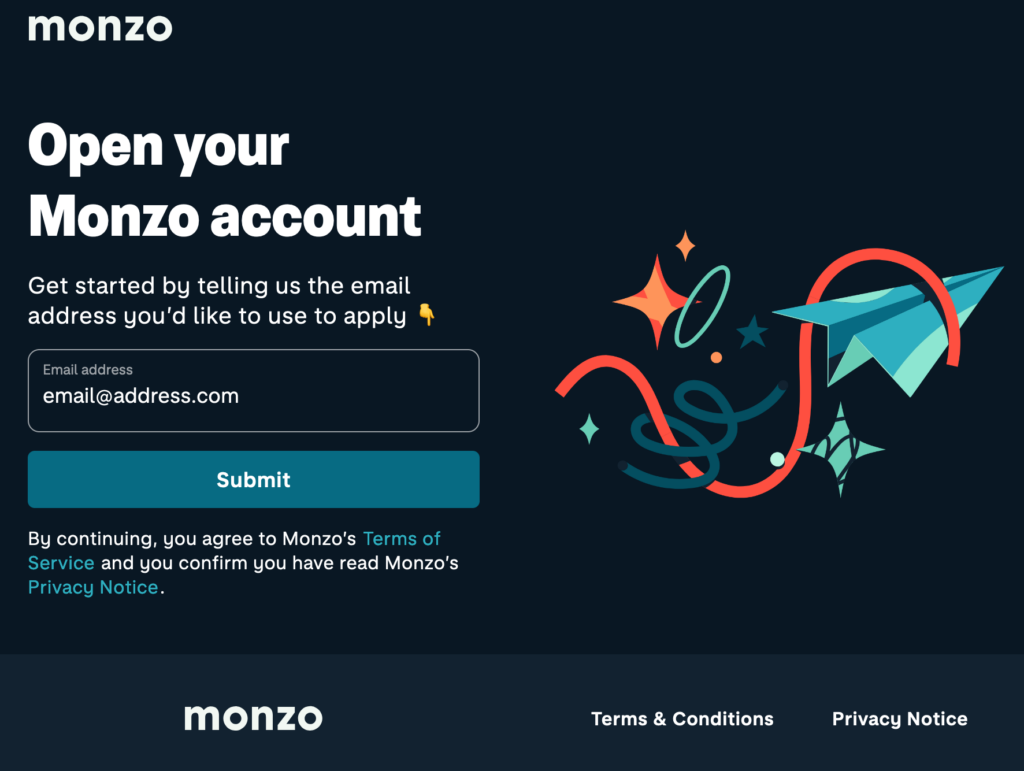
Source: Monzo
After submitting your email address, you see clear steps, a convenient QR code, and a simple list of what you’ll need to complete your application—even down to the amount of time.
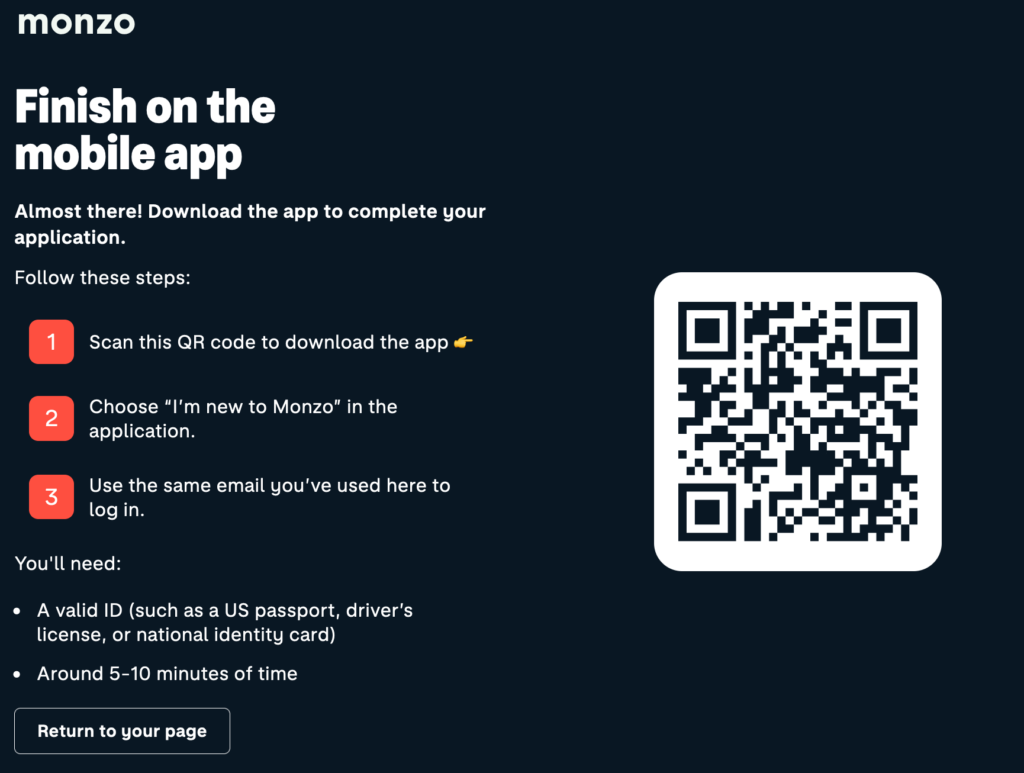
Source: Monzo
Opening a new bank account is traditionally a complex task. But Monzo gives users very little reason to abandon the process.
There’s a lot that can go into reducing friction but, at its core, your process should include:
- Simplifying forms (ask only for essential information)
- Designing intuitive navigation so users can find what they need fast
- Making sure your content loads quickly on all devices
From there, use owned data (e.g., analytics from user sessions) and industry research to learn what consumers value and find frustrating. And then make data-driven decisions.
For instance, Baymard Institute found that the top reasons U.S. consumers abandon online shopping carts are excessive extra costs, mandatory registration, and security concerns.
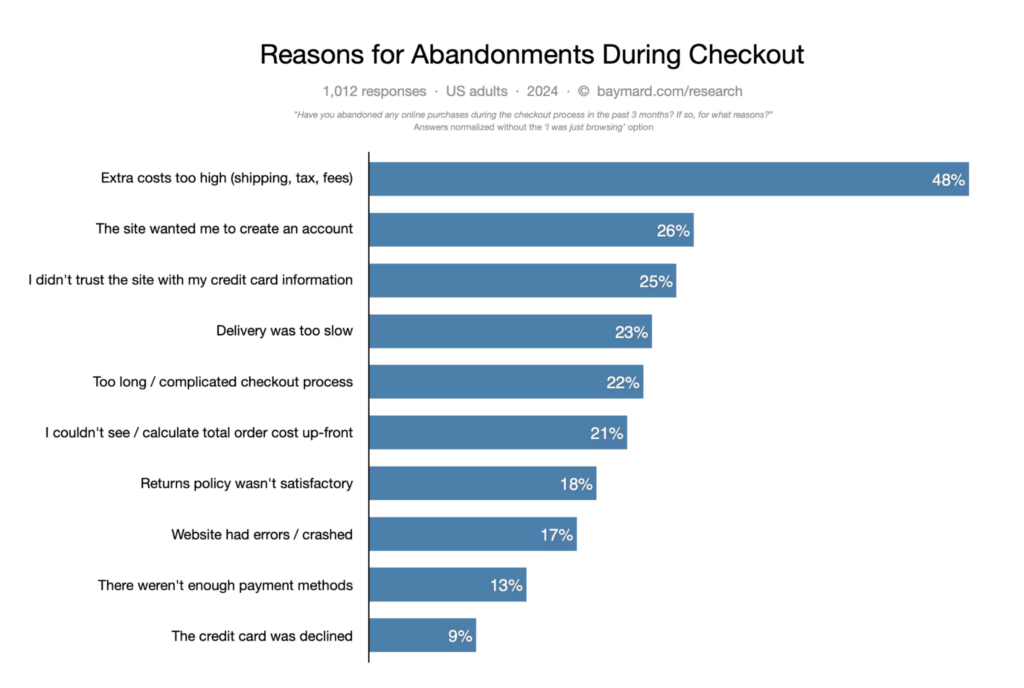
Source: Baymard Institute
Addressing these issues by offering guest checkout, transparent pricing, and visible security assurances should reduce cart abandonment rates (run small-scale A/B tests to be sure).
Collect real users’ feedback to learn what your target audience wants.
Ask how easy it was for them to complete their purchases or navigate your site, then use their input to make targeted improvements.
3. Personalize the customer journey
Personalizing the post-click experience is proven to increase customer engagement.
According to a McKinsey report, 76% of consumers are more likely to consider purchasing from brands that personalize their interactions, with 78% also more likely to recommend or repurchase.

Source: McKinsey & Company
Personalization goes beyond just addressing users by name. It’s about delivering relevant content, offers, and messaging at the right moments in the customer journey.
But the process still doesn’t need to be complicated.
One simple way to deliver tailored experiences that grow post-click conversions is to segment users based on their behavior or location.
For example:
- Returning visitors could see product recommendations based on their browsing history, while first-time visitors see welcome offers or “free trial” sign-up forms
- All visitors might see shipping options based on their state or region, making their experience relevant and purchase decisions easier
Walmart uses simple location-based personalization to improve user experience.
Even before logging in, I can see shipping and store information for my area:
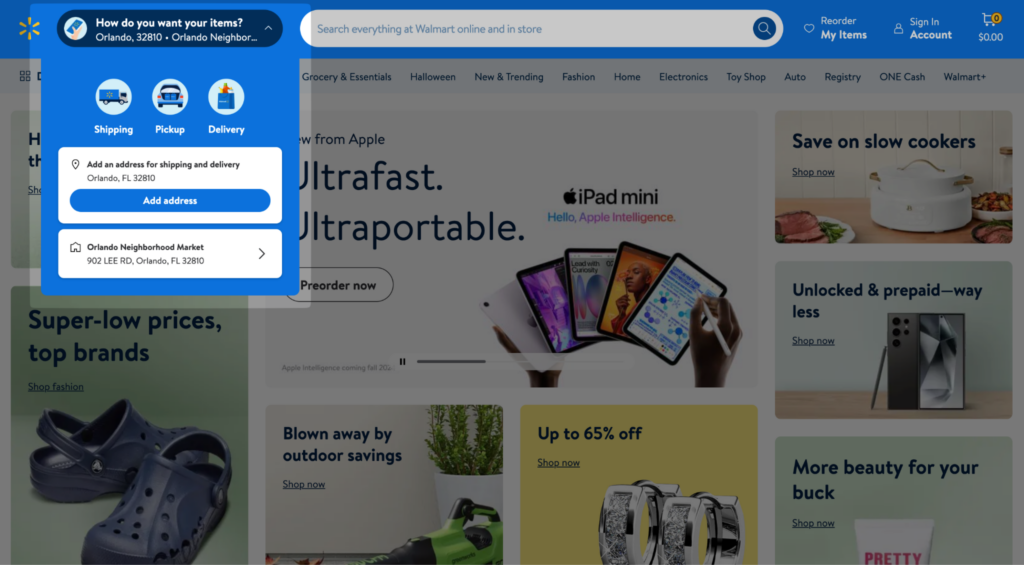
Source: Walmart
I immediately know my options, so my buying decision is more straightforward. It’s a great example of how personalization can reduce friction to optimize post-click conversions.
Relevance makes shoppers feel valued, but personalization is also about reducing cognitive load.
Targeting and retargeting users with relevant content helps them find what they came to your site for. It’s like placing custom signs in a store to direct shoppers straight to what they need.
4. Communicate a clear value proposition
Your value proposition is the biggest reason a customer should choose your product or service over a competitor’s.
If this message isn’t crystal clear, you risk losing their attention, regardless of your other post-click experience optimizations.
The value proposition answers an essential question for your customer: “What’s in it for me?”
Do that by clearly communicating:
- What you offer (e.g., product, service, or solution)
- Why it’s valuable (e.g., saves time or improves efficiency)
- How it’s different from other options (e.g., more affordable or faster)
For example, skincare brand Bubble explains all three on this single page:
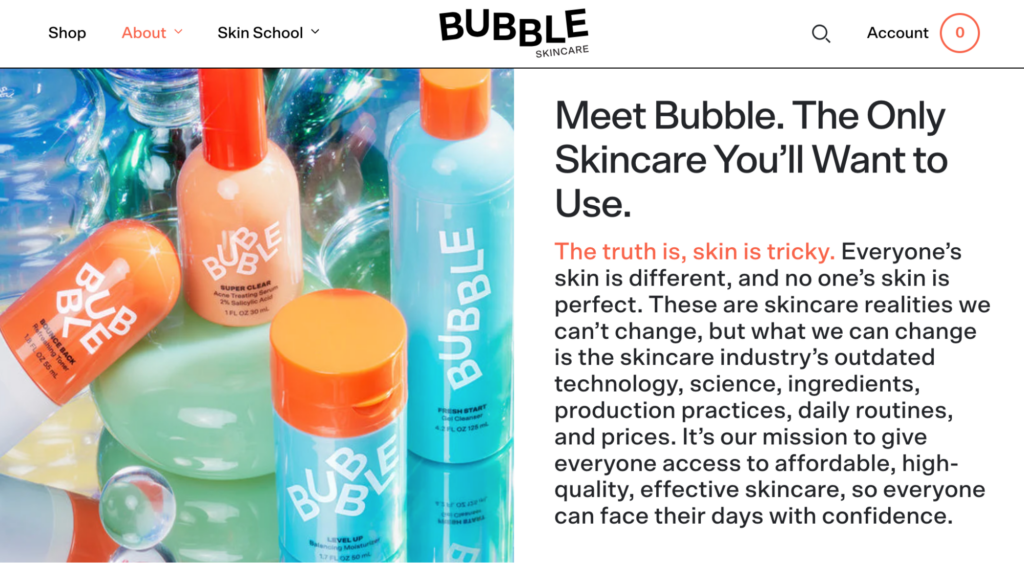
Source: Bubble
The short paragraph gives you:
- The “what” (“effective skincare”)
- The “why” (“so everyone can face their days with confidence”)
- The “how” (“affordable, high-quality…”)
You know what Bubble adds to the skincare market and why, for the right customer, it’s the best solution.
You can also use before-and-after scenarios to show how your products solve problems.
We do this on the Smart Panda Labs site using relatable metrics like revenue growth and conversion rate:
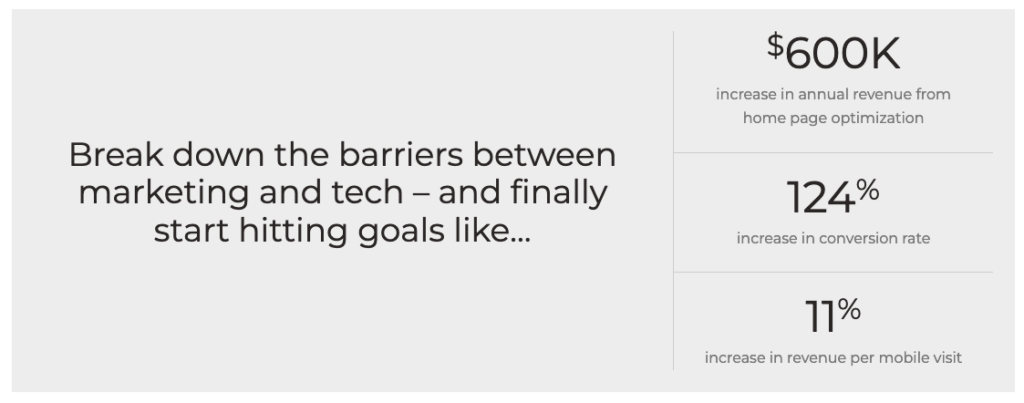
Weave your value proposition throughout the post-click experience. Give users every reason to stay on-site and invest in your brand.
Make it clear on key pages (e.g., your homepage and “about us” page), and use visuals, headlines, and CTAs to reinforce it throughout the checkout flow (e.g., “Ready to save time? Checkout securely now…”).
Top Tip: Optimizing post-click conversions requires investment, so you’ll need buy-in from other stakeholders in your business. Learn how to secure approval with our guide, Barriers to Digital Transformation: Strategies for Overcoming Resistance 🐼
Advanced techniques to boost post-click conversions
Once you’ve implemented the basics, it’s time to go further with advanced techniques to take your post-click conversions up a level.
Here are a couple of methods to start with.
Dynamic messaging and real-time personalization
Dynamic messaging and real-time personalization are powerful tools for delivering better post-click experiences.
This is when you deliver tailored content, offers, and CTAs that respond to user behavior and other changing factors in real time. Both techniques increase engagement and the likelihood of sales.
Etsy uses dynamic “in demand” messages and “sale ends” timers to build urgency and encourage conversions.
For example, three people bought the sweater below in the last 24 hours, and shoppers only have just over 17 hours to get 25% off.
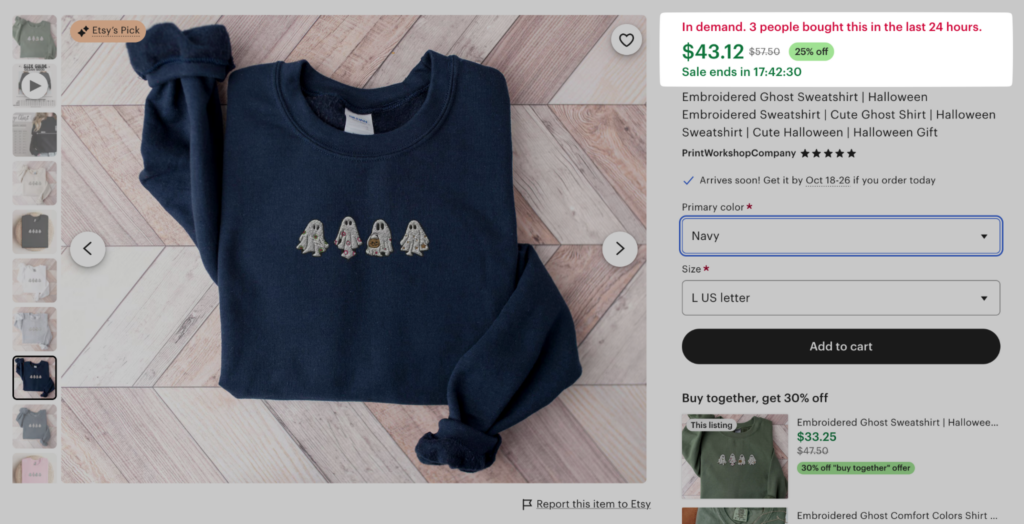
Source: Etsy
Some brands even tell you how many other shoppers have specific items in their carts. It almost creates a sense of competition, like saying, “If you don’t convert now, someone else could take the opportunity.”
Similarly, customers could see real-time recommendations based on how they navigate your site. For example, seeing trending hotels in locations you’ve just searched for.
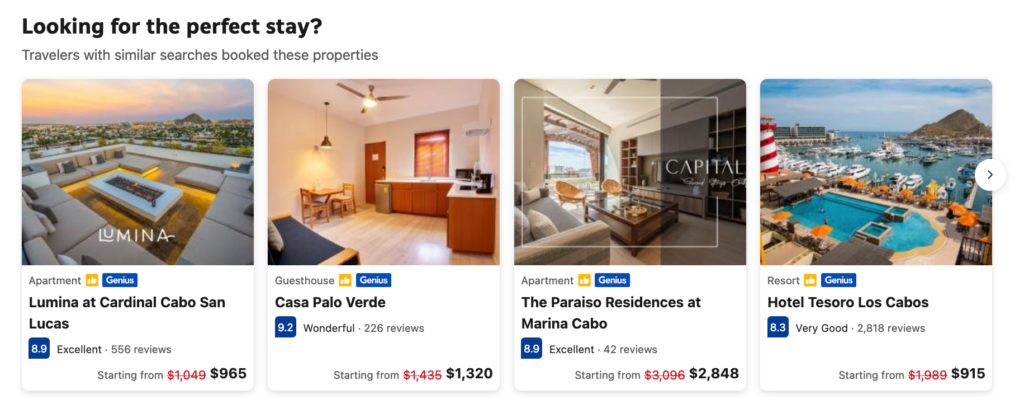
Source: Booking.com
Real-time personalization like this reduces decision fatigue by showing visitors what’s most relevant to them. It makes buying easier, optimizing post-click conversions.
Align marketing and IT for faster implementation
Foster strong collaboration between marketing and IT from the outset.
By ensuring both align on the goals, strategy, and importance of optimizing post-click conversions, you can reduce the time it takes to make impactful changes.
Marketing often knows what to improve based on data and user feedback, but implementing those changes will be slow if IT isn’t on the same page. This gap causes delays in making updates or launching new experiments.
For instance, if a website redesign will simplify navigation and reduce friction, marketing and IT can work together to plan and implement high-priority tweaks.
Reach out to a digital transformation consultancy if you lack the in-house technical expertise. Ideally, one with a track record of helping similar businesses maximize their ad spend ROI and increase profitability.
Top Tip: Looking for more advice on building tech expertise into digital marketing campaigns? We dig deeper into the benefits, challenges, and ways to increase collaboration in our guide, How to Align Marketing and IT for Maximum Business Growth 🐼
How Viceroy Hotel Group made website improvements worth $1 million
Some on the Viceroy team were skeptical when we pitched A/B testing to optimize the post-click experience and increase conversions.
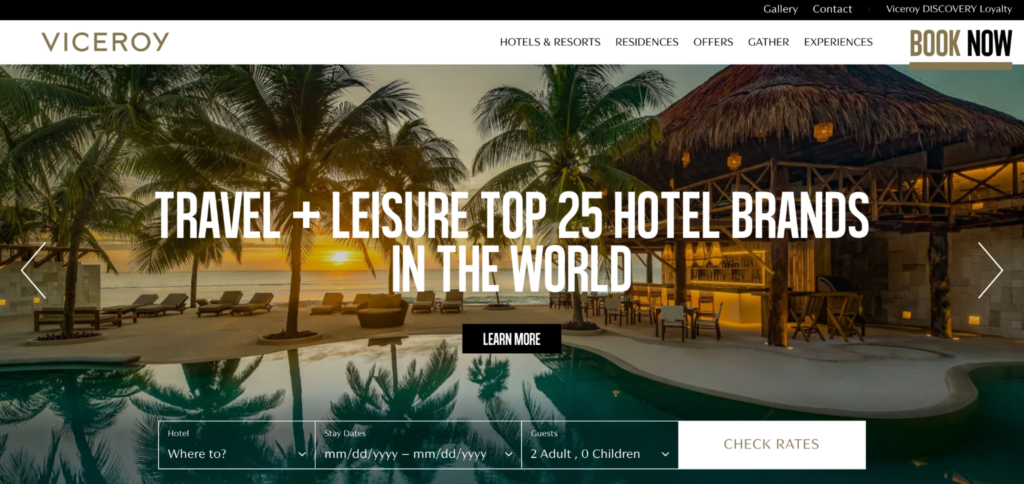
Source: Viceroy Hotels and Resorts
Naturally, they wanted guaranteed ROI and weren’t sure experimentation was the right way.
But their trust in us and our test-first methodology paid off big time.
A two-month trial period resulted in improvements worth more than $1M in incremental revenue.
More specifically:
- Adjusting CTA button copy increased room reservations by $30,000 per month
- Combining elements of post-click landing pages grew conversions by 32%
- Adding promotional tiles to gallery pages generated $100,000 in projected annual revenue
Ultimately, these results proved the value of testing to the client and more than delivered the ROI they wanted.
Beyond those immediate outcomes, the company now has a foundation and framework for satisfying and converting website visitors for years to come.
Key takeaways
Optimizing post-click conversions isn’t just “a thing you do.” It’s a continuous process of testing, refining, and tailoring your site to meet visitors’ needs. Even as they change.
By focusing on the post-click phase, you can turn high click-through rates (CTRs) into revenue-driving actions.
Here are the key actions to remember:
- Keep experimenting to keep up with customer expectations and streamline user journeys
- Reduce friction by simplifying navigation and fixing pain points that cause abandonment
- Personalize the experience to make users feel seen and valued, creating stronger connections and more conversions
- Build a clear value proposition and communicate it across the user’s journey, ensuring they never doubt you’re the best option
Sure, this guide is about optimizing post-click conversions.
But investing in better post-click experiences does more than boost your sales. It builds stronger, more profitable customer relationships to support long-term business growth.
READY TO PROVIDE A BETTER POST-CLICK EXPERIENCE?
Get insights and tips to drive more business from less ad spend, more profit from less cost, and more customer value from less churn.